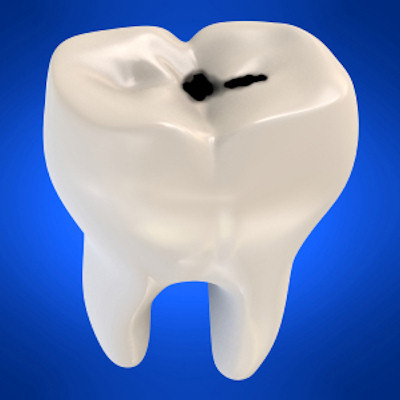
Believe it or not, amalgam fillings have been used in the U.S. as far back as the 1800s. However, despite their common, and prolonged use, there have been health concerns and environmental concerns. According to Dr. Johnathan Levine, these amalgam fillings are made up of copper, tin, silver, and unfortunately mercury--which can be toxic to bodily tissues.
And while the mercury in amalgams are generally safe, there is the risk of vapor releasing if a person with these fillings grinds their teeth or drinks soda-pop or does other repetitive activities that wear down the filling. Amalgam is also difficult to dispose of since only trace amounts are allowed in the water supply. The EPA and the ADA have very specific rules regarding disposal, but the problem is they aren't always enforced in the U.S.
Thankfully, patients aren't restricted to amalgam nowadays--there's composite fillings. These kinds of fillings are very safe, and they are actually easier for the dentist to work with and nicer looking than amalgam. This means that not only can you fix cavities with them, but you can use them for any small cosmetic adjustments, like chipped teeth.
However, a study found at drbicuspid.com says that while composites are a great option, they can be somewhat difficult on posterior teeth, since they can be broken down more quickly by excess wear or repeat cavities:
Reasons for Composite Failure Have Changed
Since resin composites were introduced, there has been an ongoing challenge to improve their clinical performance, particularly for use in posterior teeth," the authors wrote. "This has seen the introduction of hybrid, packable, nanofilled, low-shrinkage, and bulk-fill composites, but still the clinical effectiveness of posterior composite is questioned by many."
Dr. Alvanforoush is a doctoral student from the Melbourne Dental School at the University of Melbourne.
Reasons for failure
Direct resin composite restorations are becoming more popular, as patients prefer tooth-colored restorations because they offer a superior aesthetic appearance, and patients want to avoid the placement of new amalgam in their mouths. The study authors noted that substantial advancements and changes in composite materials and adhesive systems have taken place over the last 20 years, but no systemic literature review has assessed the clinical performance of posterior composite restoration . . .
The authors concluded that comparing the reasons for failure over the last two decades had revealed an important shift as secondary caries, postoperative sensitivity, and wear were reduced as failure factors in contrast with the increased role of tooth fracture, restoration fracture, and endodontic treatment as reasons for failure.
"The greater level of fracture may relate to the increase in size of restorations now being placed; however, more detailed data are needed," they wrote. Read the full article here . . .
But as you can see, if a patient is exhibiting these issues, he or she should consult with their dentist about how to reduce wear and tear. Prevention is the best tool that patients have at their disposal to save the integrity of their teeth. Despite these hiccups in the study, composite fillings are still excellent materials, and you can learn more about them at: myimagedental.com/services/general-dentistry/fillings/
While some patients may want to replace their amalgam with composite, the downside is that this can weaken the integrity of the tooth even more and possibly release mercury vapor. So it is best to keep any of your amalgam fillings intact if possible and use composite for any new caries that need to be filled.
Will these materials have a place in the future? It's hard to say, but it looks like that many dentists have already phased out amalgam and strictly use composite. But will composite stay? For now, yes--but drbicuspid released an exciting article that gives patients a glimpse at their future dental care:
Study Offers New Treatment for Larger Caries
January 9, 2017 -- Soon you might be treating your patient's caries with a collagen sponge filled with a drug -- first tested to treat Alzheimer's patients -- that stimulates the natural ability of teeth to restore dentine.
A study published January 9 in Scientific Reports by researchers in the U.K. documented a new method of stimulating the renewal of living stem cells in tooth pulp. While still needing human clinical trials, this approach may allow large cavities to be repaired without the use of cement or fillings.
"The simplicity of our approach makes it ideal as a clinical dental product for the natural treatment of large cavities, by providing both pulp protection and restoring dentine," stated lead study author Paul Sharpe, PhD, in a press release. "In addition, using a drug that has already been tested in clinical trials for Alzheimer's disease provides a real opportunity to get this dental treatment quickly into clinics."
Sharpe is the head of the craniofacial development and stem cell biology division at the King's College London Dental Institute . . .
After removing caries decay, a tooth's soft inner pulp is exposed, and a natural dentine repair process begins. This process uses a form of stem cells in the patient's mouth that becomes new cells. These cells release a form of reparative dentine, according to the study authors. Read the full here . . .
Being able to stimulate new cells in the dental pulp would be amazing! And the study says that if perhaps their research and tests succeed, patients may not even need fillings in the future! However, this kind of information shouldn't encourage patients to be lax about their oral health. While fillings can certainly help repair functionality, nothing is as good as a natural tooth. And it could be many years before this study's findings play a role in dental offices across the U.S.
The Evolution of Fillings: What the Future Holds for Cavity Restorations is republished from: www.myimagedental.com
Image Dental
3453 Brookside Road, Suite A
Stockton, CA 95219
(209) 955-1500
email@myimagedental.com
Google My Business Listing
Google Map
Directions to our office
Yelp Page

No comments:
Post a Comment